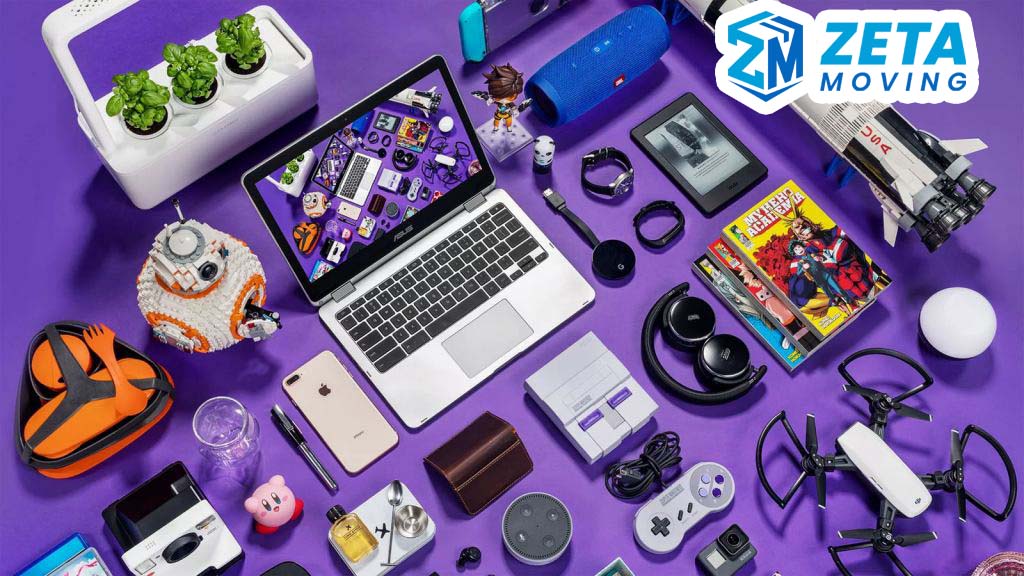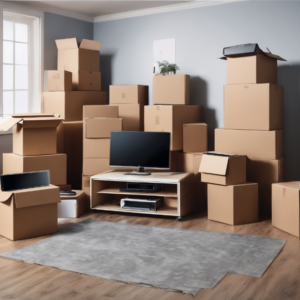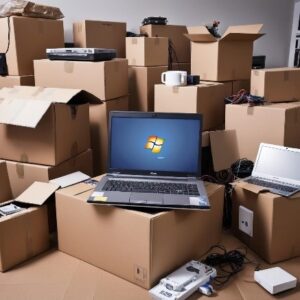
Published on June 30, 2024
administrator
Published on June 30, 2024

Packing electronics for moving
Before diving into disconnecting and packing, it’s essential to gather the necessary supplies:
Quality packing materials: Invest in sturdy boxes, bubble wrap, packing peanuts, and packing tape to provide adequate protection.
Ziplock bags: Use these to store small accessories like cables, screws, and remote controls. Label each bag to easily identify which device it belongs to.
Cable ties or twist ties: Keep cables organized and prevent tangling during transit.
Soft cloths: Use these to wipe down electronics before packing to remove dust and debris.
Take a systematic approach to disconnecting your electronics. Start by unplugging all cables and cords from each device. To avoid confusion later, consider taking a quick snapshot of the setup before disconnecting. This will serve as a reference point when reconnecting at your new place.
As you detach cables, label them or use color coded stickers to match with the corresponding ports on the device. This simple step will save you from a headache when setting up your electronics later.
Once everything is disconnected and labeled, it’s time to pack each device securely:

Wrap each electronic item in bubble wrap, ensuring all sides are adequately covered.
Place devices in appropriately sized boxes, filling any empty spaces with packing peanuts or crumpled paper to prevent shifting during transit.
For TVs and monitors, consider using custom-sized cardboard boxes or invest in specialized TV boxes designed to provide extra protection.
If you have the original packaging for any electronics, use it. Manufacturers often design these boxes to provide optimal protection during shipping.
Some electronics require extra care due to their fragility or unique features:
Computers: Remove any CDs, DVDs, or USB drives before packing. Consider removing the hard drive from desktop computers and transporting it separately to prevent damage.
Printers: Secure movable parts, such as trays and ink cartridges, with tape or packing material to prevent them from shifting.
Gaming consoles: Remove discs and controllers, pack them separately, and ensure the console is well padded to prevent damage to delicate components.

Before sealing the boxes, double check to ensure all valuable items like jewelry, important documents, and personal electronics such as smartphones and laptops are accounted for. Back up essential data from computers and other devices to an external hard drive or cloud storage to safeguard against potential loss or damage during the move.
During transit, fragile electronics should be placed in a secure area of the moving vehicle, away from heavy items that could potentially damage them. Avoid stacking heavy boxes on top of delicate electronics and opt for a climate controlled environment if possible, especially for sensitive devices like computers and cameras.

In conclusion, when it comes to disconnecting, packing, and later unpacking and reconnecting electronics during a move, meticulous planning and attention to detail are crucial. Following these steps and taking necessary precautions ensures your valuable gadgets arrive at your new home safe and ready to seamlessly integrate into your new space.
For professional assistance and a stress free moving experience, consider enlisting the services of Zeta Moving Company. With their expertise in handling delicate electronics and ensuring smooth transitions, they can provide you with peace of mind during this hectic time.
Happy moving!”



